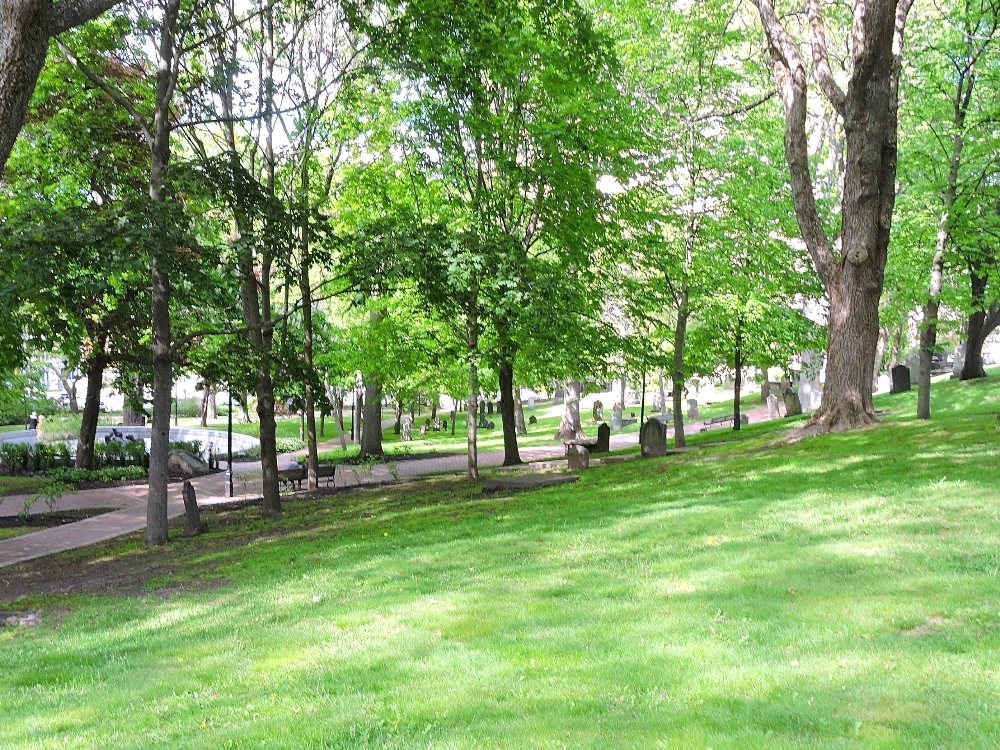As I mentioned in Part 2 of these Origins posts, my great-great-grandparents were Abial Ayers and his wife Hannah. In fact, for many years all we knew about Hannah was just that—her name was Hannah, one of the most common names for women of that era—with no family name known. I did know that she was born in Genesee County, New York around 1841, but that was not much to go on if I was to uncover anything about her family history. Nevertheless, I started searching by employing a brute-force approach. I scoured the census records looking for every girl named Hannah, born in Genesee, and the neighboring counties, between 1840 and 1842. As you might guess, there were quite a few. I then used the process of elimination to whittle down the list, removing those who were known to have married someone else, died young, or were otherwise disqualified. Eventually, I was left with just a handful of possibilities, with one that stood out from the rest. Hannah Ferguson was born in 1841 in the village adjacent to where Abial Ayers lived, and I felt certain that she was my ancestor. I placed her in my family tree, and was quite pleased when I located an official document a few years later that proved I was correct.
However, as often happens in genealogy, this discovery led to yet another set of unknown ancestors. Hannah’s parents were Isaac Ferguson, and his wife, Elizabeth, and I probably had an even more difficult road ahead to uncover their story. The only information of any kind regarding that couple were a few state and federal census forms, and they were less than explicit as to their origins. The dates of birth given for each of them varied by as much as twelve years, and both of their places of birth were listed as Canada.
In most cases, it was given as just that, but on one form it appeared as Canada West
(Ontario,) and on another as Canada English
(the Maritime Provinces. ) So they could have come from just about anywhere north of the border, and could have been born any time around 1800, a time when useful records were scarce in that part of the World. Nevertheless, I was motivated to learn something more about them. My mother was born in Canada, but I had no idea that we had any Canadian heritage on my father’s side of the family as well. How long had they been in Canada; did they come from Scotland, as the Ferguson name implied; who were Elizabeth’s family; and what prompted them to relocate to western New York in the 1830s? These were some of the many questions I had, but suspected that I would never be able to answer.
A few years later, I began to utilize the emerging field of genetic genealogy, as many others have also done, with the goal of resolving some of the lingering gaps in my tree. I will try to minimize the tedious details here, but I sent samples to the three main testing companies at the time. In this case, I was lucky that my two strongest relative matches, as provided by two different companies, in my initial results were also descendants of Isaac and Elizabeth. Between the three of us, we shared DNA for almost the entire length of chromosome 2, which finally gave me something to work with, but in a way that still required considerable patience. Over the next three years, I built up a list of over 50 other people who all possessed smaller portions of that same DNA strand on chromosome 2. This meant that I had common ancestors with each of them farther back on that same branch of my tree, above Isaac and Elizabeth.
The next step was to try to triangulate some of those other matching people. That process involves searching through the family trees of those other matches to find who they have in common with each other, and, once that is known, since I also share the same common DNA strand with them, it is assumed that their common ancestors are also my ancestors. Within the set of over 50 relevant matching people, the specific DNA segments they each possessed segregated them into three groups, which I called the Large Group, the Small Group, and the Medium Group, based on the number of people in each group. That meant that I could possibly identify three, or more, ancestors of Isaac and Elizabeth. It turned out to be fairly easy to triangulate the Large Group, but the other two proved to be more troublesome, and soon I was stalled again.
The common ancestors for everyone in the Large Group were Henry Fowler and Rebecca Newell, whose families arrived in New England in the 1650s. That couple first lived in Massachusetts, then briefly in Rhode Island, and finally settled in Westchester County, New York, just north of New York City. Anyone who was a parent to Isaac or Elizabeth would have been born in the last half of the eighteenth century, perhaps three generations later. So I began investigating Henry and Rebecca's descendants, looking for any links to my known family, or any connection to Canada. This was not a simple task, since that Fowler family was quite prolific and their great-grandchildren numbered in the hundreds. Eventually, I noticed a circumstance that was quite intriguing. At least eight of those great-grandchildren had been Loyalists during the Revolution, and, like many of the other Loyalists, when they were expelled from the newly-formed United States after the War they made their way to Canada to be resettled. This was the first real indication that I was on the right track.
Examining all of the Loyalist Fowlers that I had been able to identify led me nowhere. All of them either had families without any available space for one of my ancestors, died soon after reaching Canada, or were not qualified for some other reason. This was not actually bad news, for if one of these more well-known Fowlers had been my ancestor, I would probably have known about them already. What I was looking for was a Loyalist descendant of Henry Fowler who left few lasting impressions or records after the War and during the resettlement period in Canada. To do that, I would need to identify another ancestor from my list of DNA matches to help narrow down the possible locations, and that would require more patience.
In the meantime, I was pleased and excited to have discovered that I actually had two Fowler lines in my Family Tree. As a surname that was initially derived from an occupation, there are many distinct Fowler family lineages, which are not usually closely related to each other at all. I was curious if my newly-discovered Fowlers were from the same ancient lineage as my Grandmother’s Fowler line, the one that passed through Centralia. Such an answer can be revealed by examining the y-DNA of a man from each lineage to see if they are a close match. There were already Henry Fowler descendants in the relevant online database, and after I found a willing man from my grandmother’s Fowlers, and sent him a free test kit, I learned that both lineages are in the haplogroup R1b-L21, a group with a distinct Celtic distribution. However, their subgroups diverged around 2,000 years ago, which was during the time before surnames came into common use. So my two lines are fairly close, but definitely not the same Fowlers.
Eventually, I received the breakthrough I needed for my main search. I was finally able to triangulate one of the other two groups of matches I had identified long before, specifically the Small Group, which was the one I had not expected to be able to solve. That group pointed to an ancestor with the surname Graves, one who was probably an early colonist in Massachusetts. Running a search for both Fowler and Graves in the databases related to the Loyalists turned up one, and only one, result, the marriage of a Joshua Fowler to Sarah Graves in 1792 in New Brunswick. Sarah, as it turned out, had connections back to the Graves family of Massachusetts. At that point, I knew I had found the people I had spent years looking for.
The Loyalists, those individuals who supported the British side during the Revolution, were a complicated group of people who lived lives that probably didn’t turn out the way they had expected they would. The reasons for the choice they made were, presumably, as varied as one might expect. Some were zealous supporters of the King. Some probably chose to simply stay true to the prior commitments they had made. Some may have agreed with the principles of the Revolution, but assumed that the British would be victorious in the end, and decided to join what they thought would be the winning side. Then there were undoubtedly some who awoke one morning to find themselves living on the wrong side of the lines, with few options available apart from becoming a Tory. No matter what their motivations had been, the years following 1776 proved to be difficult and challenging for most of them.
There is no indication of what Joshua Fowler’s feelings on the subject were, but in his father's will, written in Westchester County, New York, in 1765, when Joshua would have been around fifteen years of age, it is stated that Joshua will not receive his inheritance, unless he returns home within two years. This seems to indicate that he was a bit adventurous, or, at least, didn’t like being told what to do. John Fowler, Joshua’s father, died in 1768, and it is not known whether Joshua was at home then, or not.
What is known, is that once the Revolution was underway, Joshua Fowler served for two and a half years in DeLancey’s Refugees.
In this context, the word Refugee is not being used in the modern sense—someone who is fleeing to another country to avoid danger—but with the more traditional meaning of someone who lives in a refuge. In this case, the refuge in question was the area in, and around, the settlement of Morrisania, what is today known as The Bronx. Led by General Oliver DeLancey, this unit was charged with providing security, and gathering intelligence, food, and supplies in support of the British-held areas of New York City and the lands to the north. They were also referred to as the Westchester Chasseurs,
or DeLancey’s Cow Boys.
The latter name came into use because one of their duties was to ride out into the hinterlands and procure cows from the local residents, presumably by whatever means necessary, which were brought back to the refuge to sustain its activities. Since this was one hundred years before the events of the Old West,
it appears that my 4th-great-grandfather, Joshua Fowler, was one of the World’s first Cowboys.
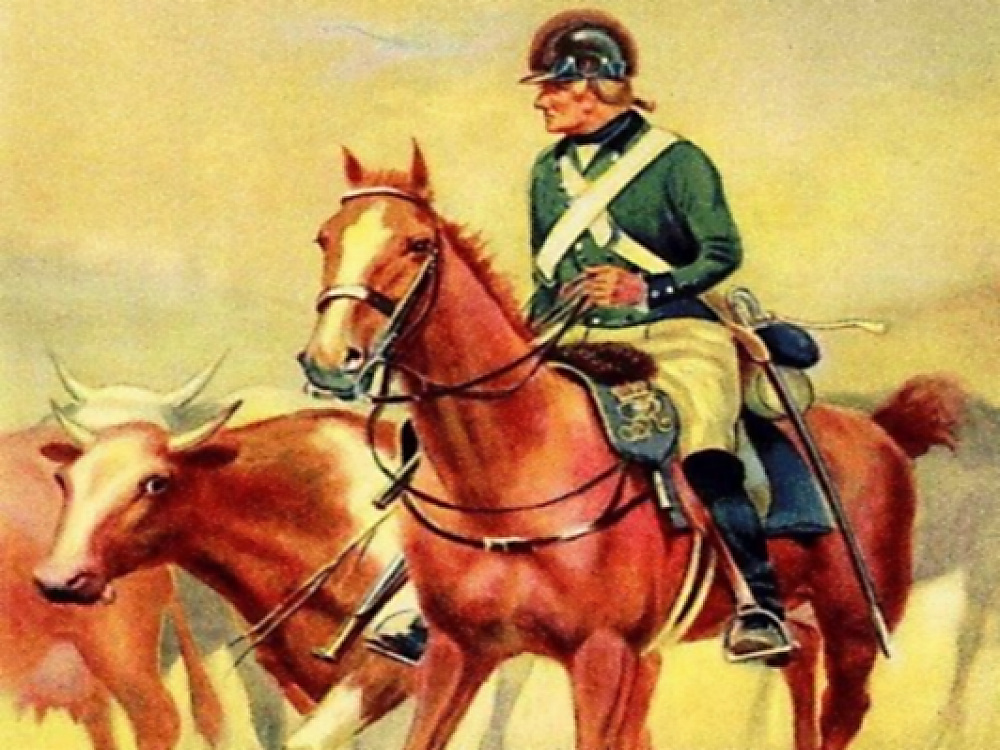
Of course, the Americans won the War and instantly the situation of life became less than ideal for anyone who had been a Loyalist. No longer welcome in their former homes, they began the process of evacuating the new Nation, a process which proceeded in a remarkably orderly manner, given the circumstances. Some returned to England, if they had the ability to do so, a few migrated southward, to Barbados or Bermuda, but the vast majority went to Canada, principally to Ontario and Nova Scotia. Joshua was among those who arrived in the latter province in the early 1780s. Like most of his compatriots he continued northward towards the area around the St John River, on the opposite side of the Bay of Fundy. In fact, shortly thereafter, that entire region was split off from Nova Scotia to become a self-governing province for the Loyalists, and given the name New Brunswick. Today the current flag of that province includes an image of a ship, which, in part, commemorates the fleet that brought the escapees there.
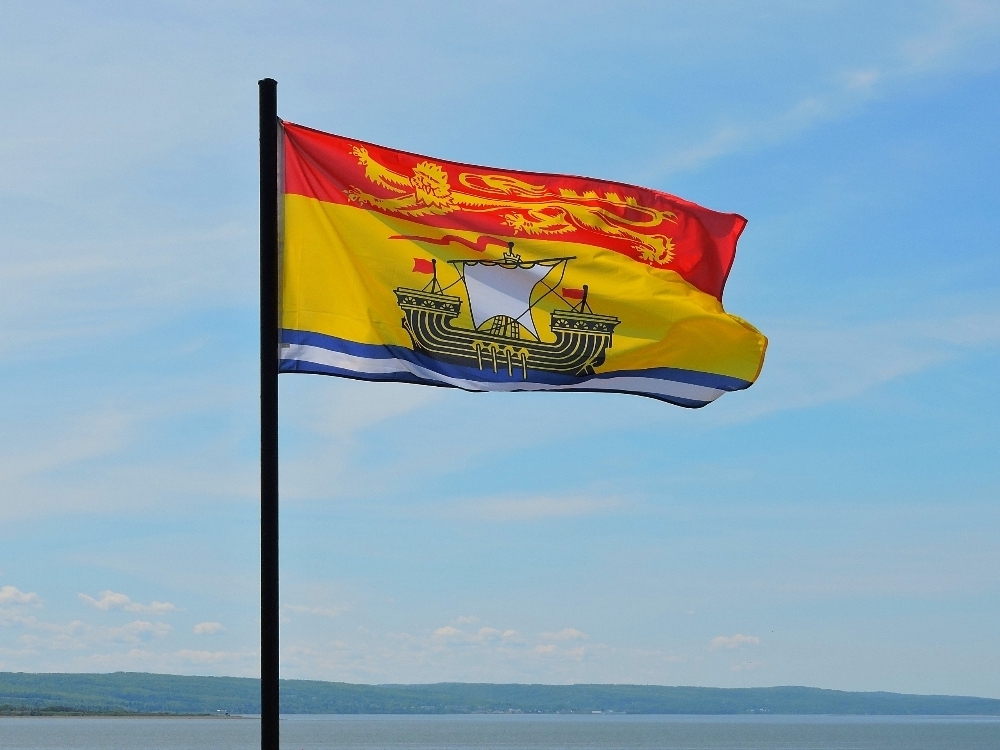
I wanted to include some of the places relevant to this story on the route for the Tour, even though I realized there would not really be anything specific that could easily be seen today. With that in mind, I made a short circuit through the lands of central New Brunswick. Joshua was granted a parcel of land on Long Island, an island in the St John River, across from the villages of Wickham and Hampstead. He and Sarah raised an unknown number of children there. The size of their family is not known because, at the time of the Loyalist’s arrival, New Brunswick was a true wilderness and there were no institutions in place to keep records for its residents. The births of children went unrecorded, and marriages were witnessed only by the wedding party's neighbors. Two of their children, a son and daughter, were baptized as adults, years after Joshua’s death, and one other son was mentioned in a land document, but I believe they had still more offspring.
Long Island appears in the image below, though it is hard to make out its form. Today, it is essentially unused, there are no structures in existence there, and no way to reach the island without a boat. What I do know is that Joshua did not like this location and petitioned to trade for another parcel of land. His primary reason was the pernicious spring floods, known in this region as freshets. These prevented him from successfully producing enough food on his land to support his family. In his petition, he stated ...your Memorialist hath a large family for to maintain, and having only a small parcel of land...
Joshua and Sarah were married in 1792 and, given that date, they could not have been the grandparents of Isaac Ferguson, and so I believe that they also had a daughter named Elizabeth Fowler, who would eventually become the spouse of Isaac. This is the only possible way that everything fits together, and it all clicks so smoothly that it must be correct. I can certainly sympathize with Joshua regarding the freshets. With all the wet weather I had to deal with when I was in the region, often making it difficult for me to find a campsite, I can definitely see what a problem they would have been for his family. I also believe that another detracting factor on such a waterlogged island must have been the mosquitos, which, I now know from first-hand experience, certainly would have been incredibly voracious back then, just as they are now, very possibly leading to insanity.
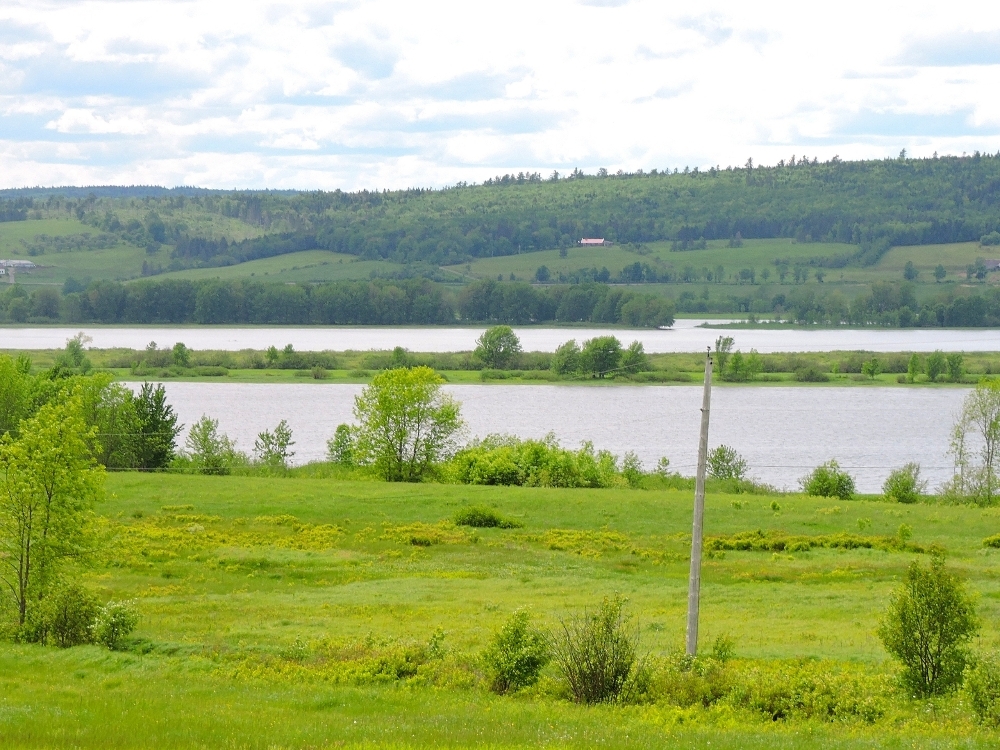
As I stopped by the abandoned Wickham Wharf to view the island, I was surprised to see this house, which apparently had been recently moved from another location. The sign above the door reads: Long Island Home, Loyalist House.
I was intrigued by the very slight possibility that it could have been the Fowler home, but I learned later that it was part of a former hotel on Long Island that existed in the early 1820s, perhaps earlier. Joshua died in 1806, so he may never have seen this building, but there is a good chance that Sarah or their children did. In any case, it was a nice example of the style of structure that would have been present during that age, and I appreciated this serendipitous sighting.
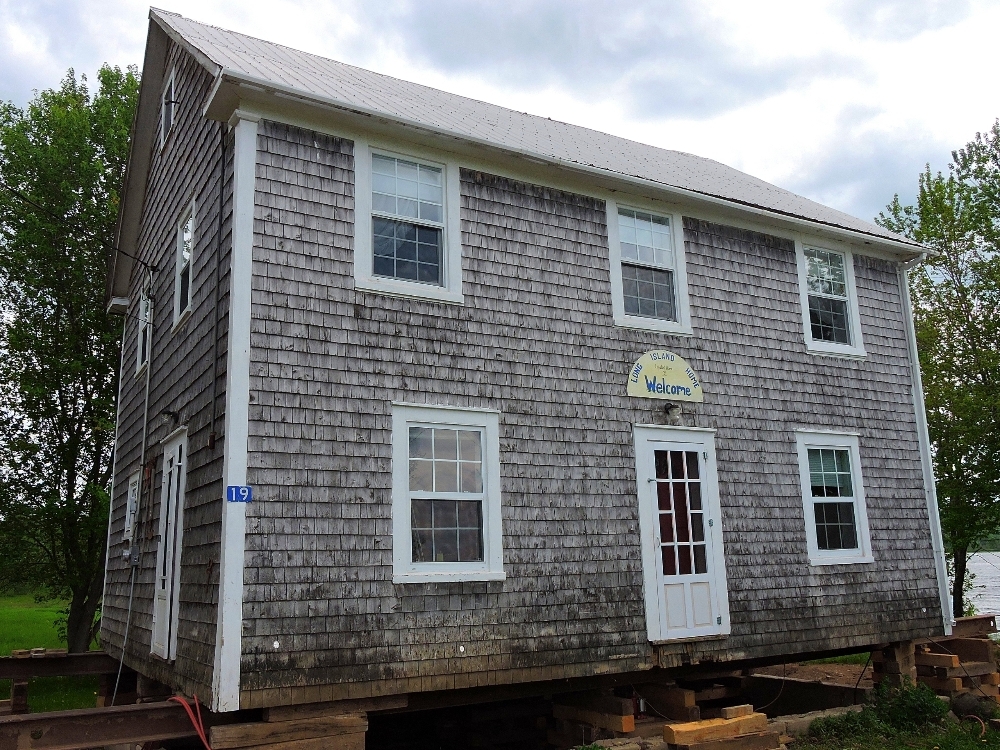
Before reaching Long Island, I passed by Fowler’s Cove,
an inlet of the nearby Washademoak Lake. This may have been named for Joshua’s son David, who later lived in the area, or it could have been named after one of the many other Loyalist Fowlers. Either way, it is connected to my family in some manner.
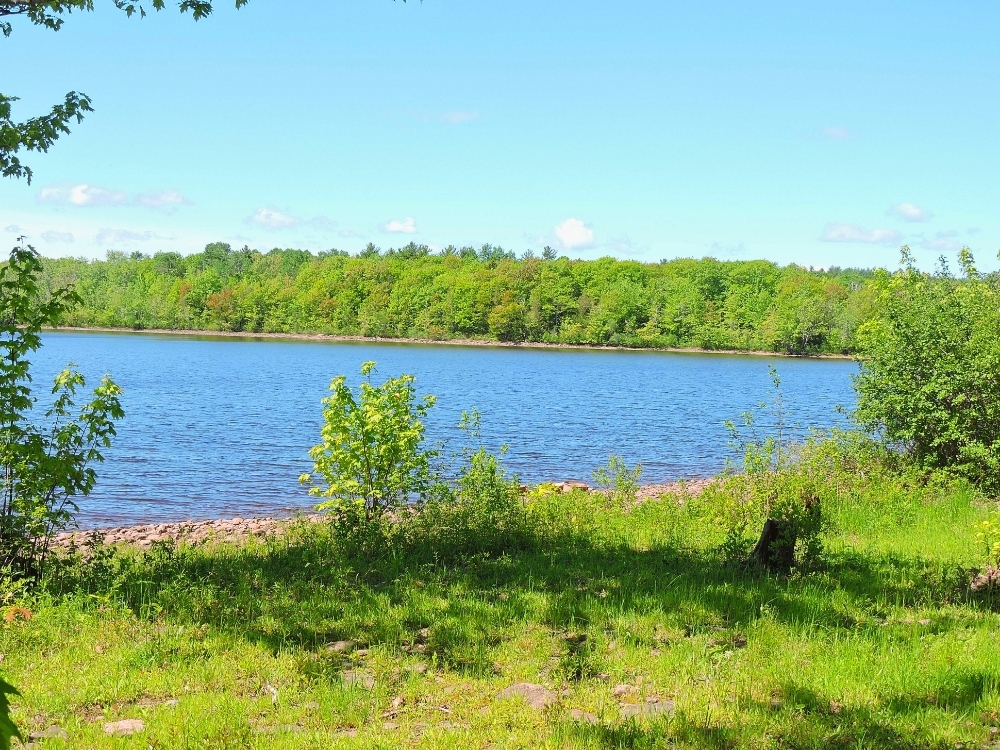
Sarah Graves’ family were not Loyalists, but part of an earlier group of migrants. Her father was Lieutenant William Graves, and during his service in the French and Indian War he was stationed at Annapolis Royal in Nova Scotia. After the War, he remained in Nova Scotia where he received a grant of land for his service. Settlers like William were known as the New England Planters, with most of them originating from New England, and Planters
being another term for colonists. He might have been familiar with the sight of Fort Anne, part of which is shown below. However, its appearance may have been substantially different back then, relative to the Fort I saw, as there have been six different forts over the years on that specific spot as Annapolis Royal changed hands between colonial powers again, and again. When the Loyalists first left New York, many of them spent their first winter around Annapolis. Later, as they continued on to New Brunswick, William Graves moved his family northward as well, for reasons unknown. It was, presumably, some time during this period that Joshua and Sarah first met.
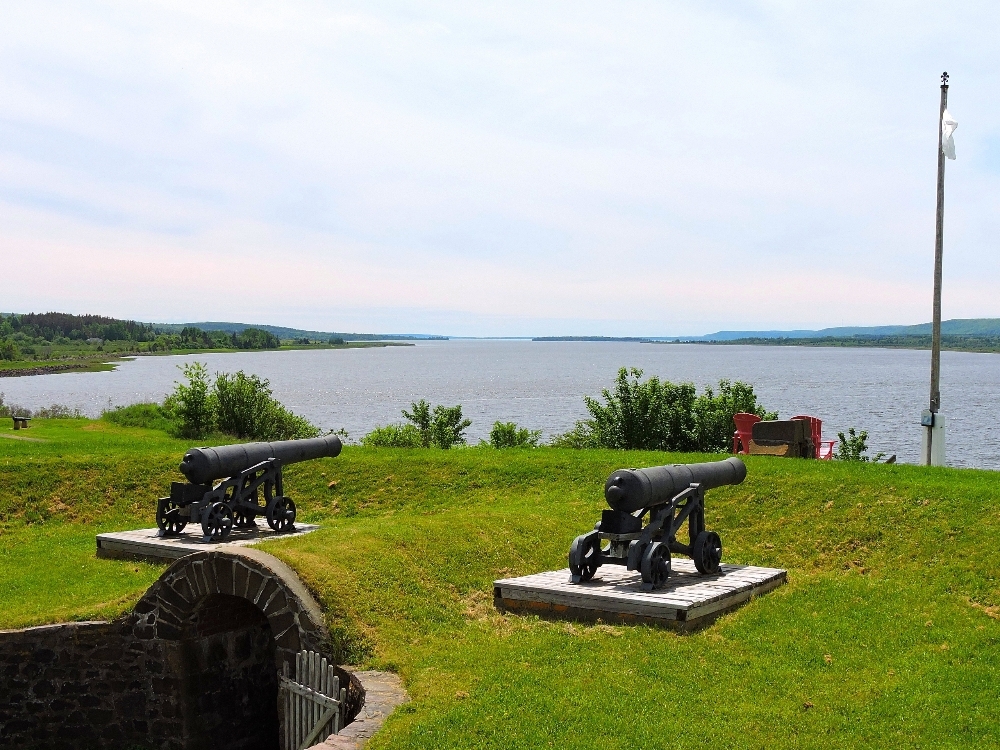
The other side of this family, the ancestors of Isaac Ferguson, have proven to be equally perplexing. I believe his parents were probably William Ferguson and Maria Brouwer, who settled in Burton, New Brunswick, a small town several kilometers upriver from Wickham. William Ferguson was not a Loyalist, or at least not an active combatant, but rather, he was a doctor, a profession that was somewhat less disciplined in those days, compared to today. He may have come from a family of Quakers who lived in the Hudson River Valley, but this association is the weakest of those I have been able to uncover, so I can’t say for sure. Maria Brouwer’s family were Loyalists, many of whom were of Dutch ancestry and lived in northern New Jersey at the start of the War. Her paternal line reaches back to Adam Brower, the well known early colonist of Gowanus, New York, and her maternal line appears to be connected to me by the Medium Group of DNA matches mentioned above. I had planned to ride through Burton to see where they lived but, as far as I have been able to determine, William Ferguson’s homestead has no road access today, and, in fact, may currently be located within the boundaries of a military base. Since I was slightly behind schedule, and since there really wouldn’t have been much of interest to see in Burton, I, unhappily, skipped visiting their former home.
In any case, Burton and Wickham were only temporary waypoints for my family. Many children of the Loyalists, unable, or unwilling, to make a successful life in what was then such a remote outpost of civilization, chose to return to the United States as adults. That was the choice Isaac Ferguson and Elizabeth Fowler made, possibly lured by the availability of affordable land in western New York. This was, of course, a fateful decision as far as I am concerned, since it eventually allowed Abial Ayers and Hannah Ferguson to meet.
Today in New Brunswick the Loyalists are remembered fondly, as many were among the founders of the Province. The image below shows the Loyalist Burial Ground in Downtown St John, a solemn, but beautiful place to visit. None of my Loyalist ancestors are interred there, instead they rest in some less-public place, out in what was, not long ago, a wilderness. Most of these people had been perilously close to being permanently forgotten, and I feel gratified that my efforts have, at least, preserved some facets of their existence for a while longer. When I learned the, somewhat surprising, fact that I had ancestors who were combatants on both sides during the Revolution, I felt noticeably pleased by that situation, since it demonstrated, once again, that the World is always more complex than we think it is. That is certainly a good fact to be reminded of, from time to time.
